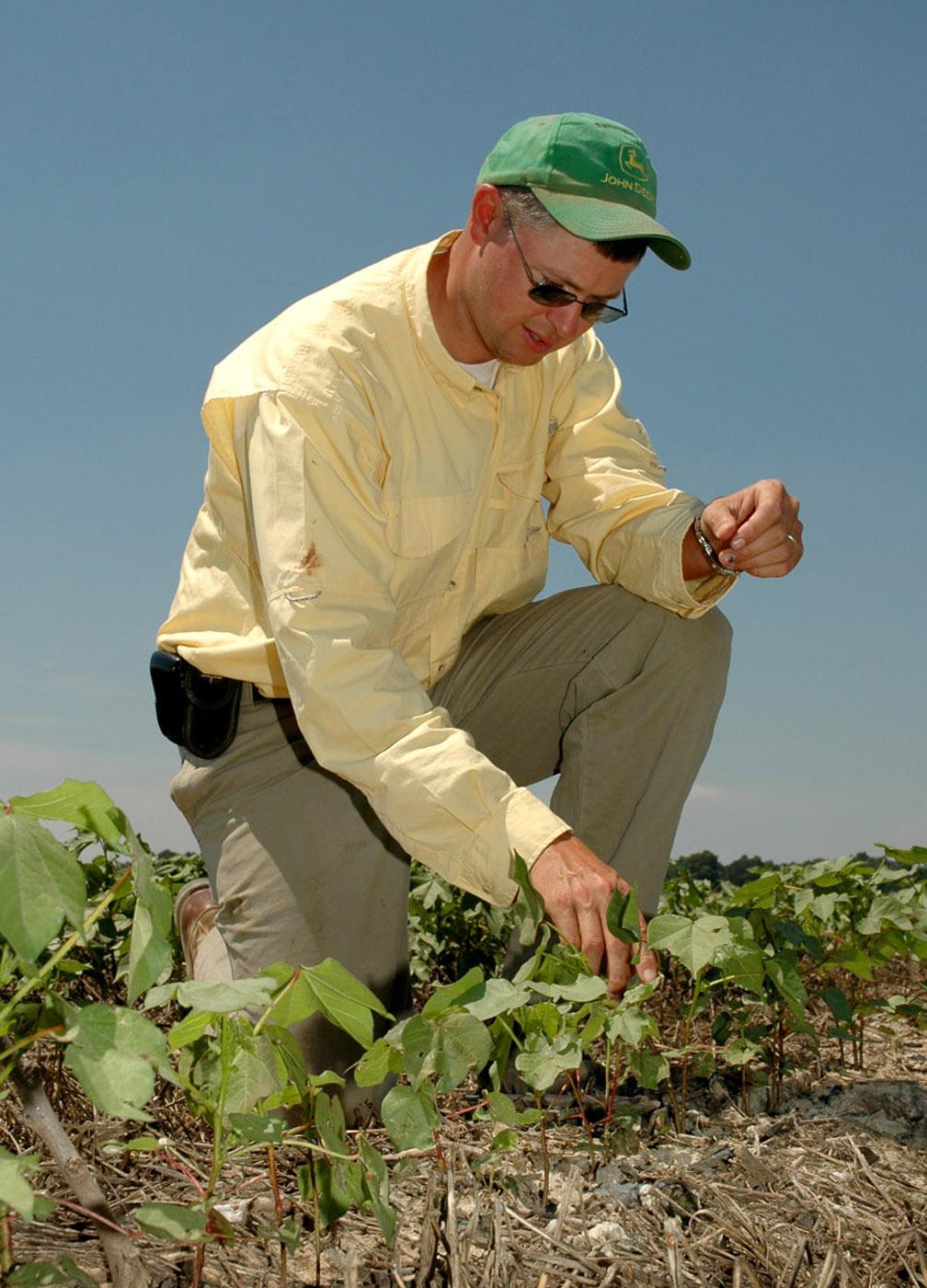Information Possibly Outdated
The information presented on this page was originally released on June 16, 2006. It may not be outdated, but please search our site for more current information. If you plan to quote or reference this information in a publication, please check with the Extension specialist or author before proceeding.
Dry, hot conditions shock crops, pastures
MISSISSIPPI STATE -- Hot, dry conditions are not unusual for Mississippi summers, but the rapid change from mild spring weather is increasing stress on crops, pastures and livestock.
The need for rain spreads from the top of the state to the Gulf Coast. Farmers who dreaded the start of hurricane season now find themselves wishing for a mild tropical storm.
Roy Higdon is an animal science and forages area agent based in Clarke County with Mississippi State University's Extension Service. He said hay and pasture conditions are critical in most areas south of Interstate 20.
“Cattle producers are feeding hay, and that's highly unusual for this time of year. Some are letting cattle into their hayfields instead of cutting for this winter,” Higdon said. “In some cases, farmers are cutting hay in other areas and taking it directly to their cattle.”
Higdon predicted farmers will take some cattle to market earlier than normal and cull more than normal. The drought also has caused farmers to rethink weed control and fertilization.
“With the price of fuel and nitrogen this high, no one wants to apply anything until it's economically feasible. They need to know they will get a rain soon after,” Higdon said. “We also have to worry about farm ponds that cows depend on for drinking water and to cool off. As the water level goes down, the water quality will go down and the mud could be dangerous for some animals.”
Dennis Reginelli, Extension area agent in Noxubee County, said the first hay cutting was 70 percent below normal for one of his primary hay producers. He predicted that the second cutting will be significantly down in quantity and quality.
“Pastures are dry and the cows are in stress,” Reginelli said. “Row crops are also stressed, with cotton and corn hurting the most.”
Reginelli said cotton experienced early-season problems when cool, wet conditions prevented the tap roots from developing fully. The earliest cotton managed to develop a good root system during an unseasonably warm April.
“The later-planted cotton developed a shallow root system, which makes plants very sensitive to hot, dry weather,” he said. “Dry weather can be good for cotton if it has a good root system, but when plants start off with a poor root system, it's hard for them to recover in dry weather.”
Tom Barber, state Extension cotton specialist, said much of the state's cotton is in good shape, but still could use a good general rain.
“Crop conditions all depend on when it was planted and how well the root systems were established. This dry spell is helping tap roots go deeper, which will continue to help the plants later in the season,” Barber said. “The down side is that cost of production goes up as the need to irrigate goes up. This will be a more expensive crop to produce because farmers had to start irrigating earlier.”
Art Smith, Extension agronomic crops agent in Tunica and DeSoto counties, said every farmer with access to irrigation is using it.
“The demand for water is overwhelming. Fields got so dry, so fast. It has been hard to irrigate everything in a timely manner,” Smith said. “Growers are irrigating several weeks earlier than normal, more aggressively and with a more urgent need. This is a bad time for soybeans to be this dry, and cotton soon will be just as critically in need.”
Smith said prevailing north winds have contributed to the rapid moisture evaporation.
“These winds have just pulled the moisture out of the ground,” Smith said.
“Wheat has been the bright spot in these dry conditions. We were able to have an efficient and timely wheat harvest,” Smith said.









